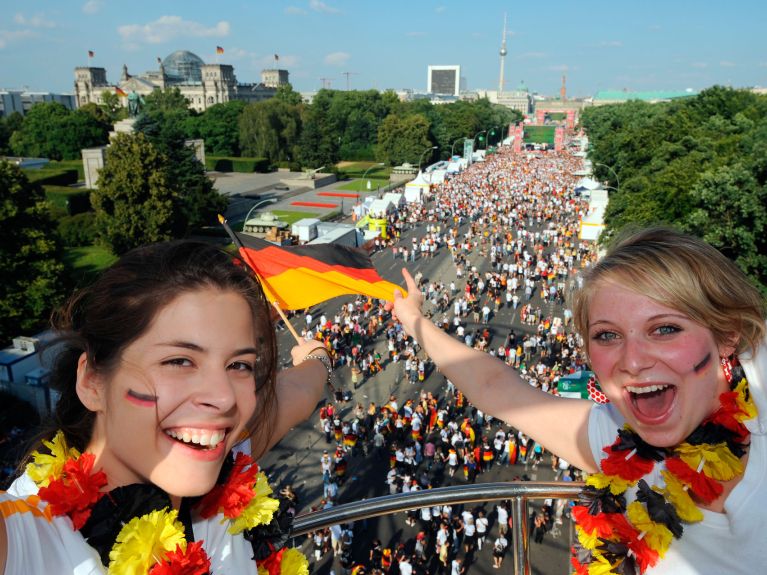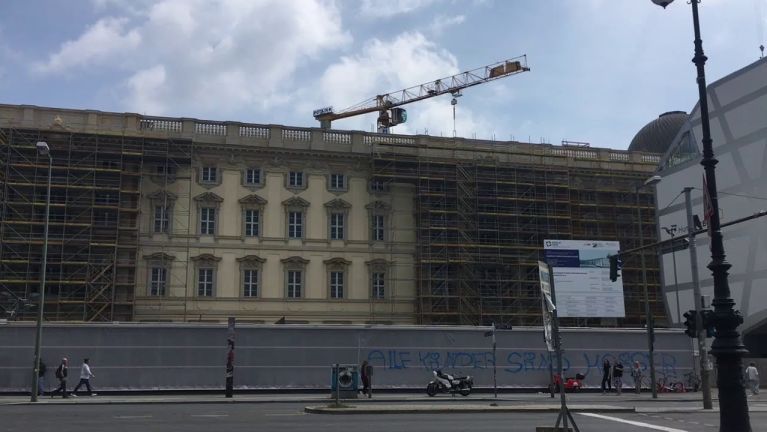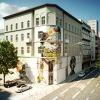Berlin's party mile with a history
Where did the Straße des 17. Juni get its name from? And what sights line it? We show the street in photos and a fast video!
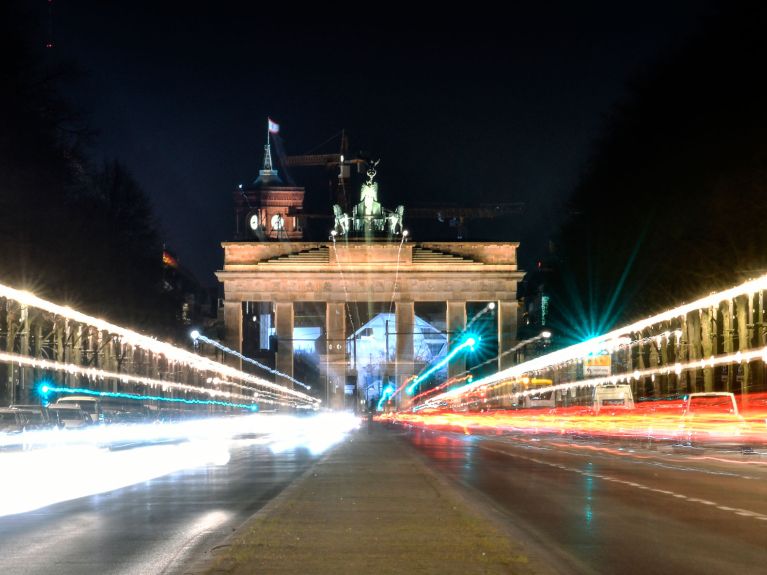
Main artery, tourist attraction, event location – hardly a street in Berlin is as well-known as the Straße des 17. Juni (Street of the 17th of June). Here begins a journey through time from East to West.
How long and wide is the Straße des 17. Juni?
The Straße des 17. Juni is part of Berlin’s large east-west axis of Berlin. It runs from the Brandenburg Gate in the east through the Tiergarten to Ernst-Reuter-Platz in the west. It is about 3.5 kilometres long and 85 meters wide.
Dieses YouTube-Video kann in einem neuen Tab abgespielt werden
YouTube öffnenThird party content
We use YouTube to embed content that may collect data about your activity. Please review the details and accept the service to see this content.
Open consent formAvenue from castle to castle
At the end of the seventeenth century, Elector Friedrich III built a street that leads from the Berlin City Palace in the historic centre of the city (demolished in 1950 and now again under construction) to the Charlottenburg Palace in the west of Berlin. The leading innovations in traffic engineering have been rolling on this street since 1820: horse buses, horse trams, and today electric trams with (rechargeable) battery operation.
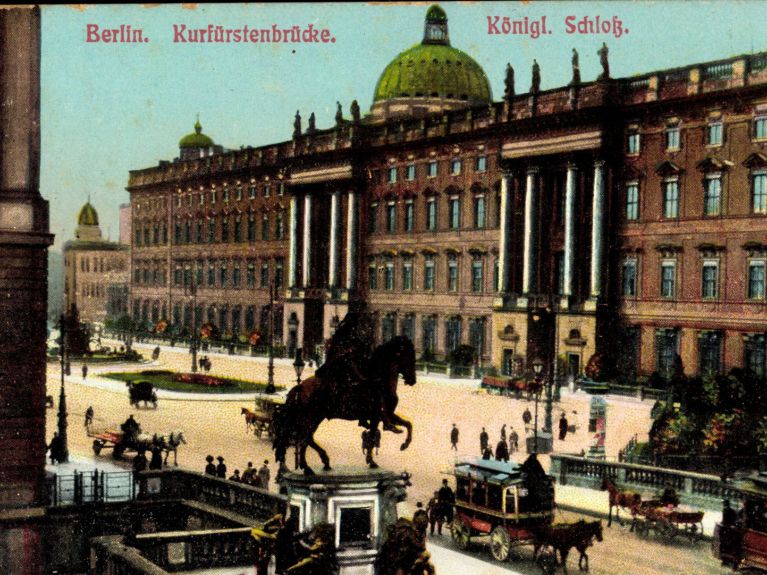
What was the former name of the Straße des 17. Juni?
In 1935, as part of the megalomaniac project “World Capital Germania”, the Nazis built the street into a prestigious avenue and called it the “East-West Axis”. Previously, the section between the Brandenburg Tor and the city train station Tiergarten was the very elegant Charlottenburger Chaussee. The part between city tram station Tiergarten and Ernst-Reuter-Platz was called Berliner Straße.

Where did the Straße der 17. Juni get its present name from?
The name commemorates a popular uprising in the GDR, which was founded in 1949. In the days around 17 June 1953, strikes and protests broke out in East Berlin and other parts of the country, which were forcibly suppressed by the East German government with the support of Soviet occupation forces. Thirty-four people lost their lives. In the course of 1953, first the West Berlin part of Charlottenburger Chaussee, then also the section from train station Tiergarten to Ernst-Reuter-Platz, was renamed Straße des 17. Juni.
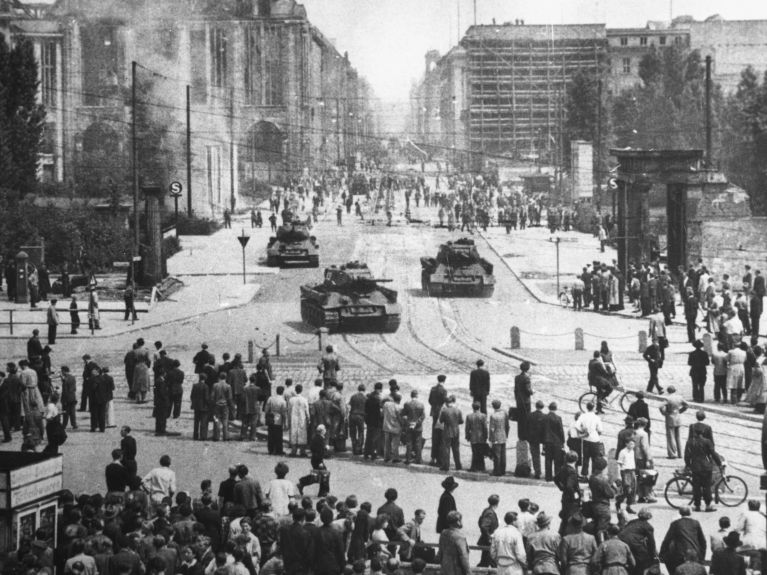
Brandenburg Gate: symbol of German unity
The triumphal arch, opened in 1791, forms the starting point of the street and is one of the most famous structures in Berlin. The Brandenburg Gate has been a national monument of liberation since 1814. At that time, the chariot sculpture of the Quadriga, stolen by Napoleon, was returned. The Brandenburg Gate became symbolic of German unity by its location on the Berlin Wall and the fall of the Berlin Wall on 9 November 1989.
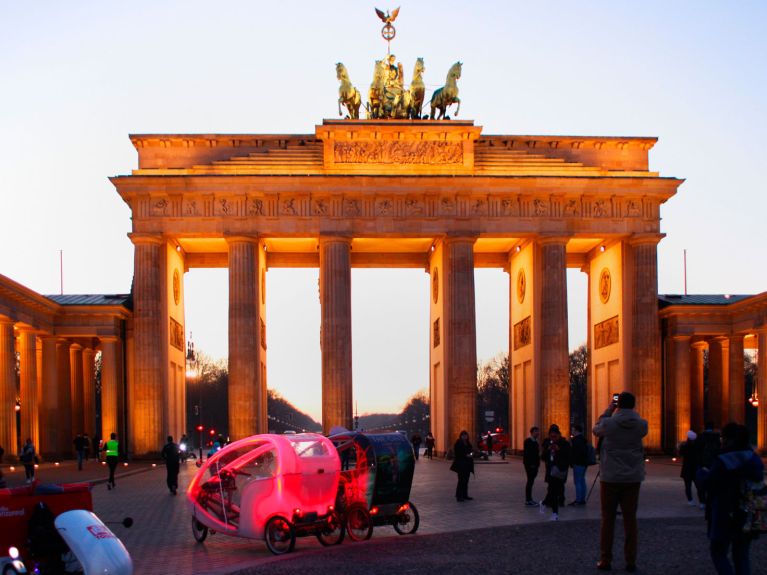
War memorials on the Straße des 17. Juni: Soviet Memorial
The Soviet Memorial was erected in 1945 by the Red Army immediately after the end of World War II. The main entrance on the Straße des 17. Juni is framed by two Soviet T 34 tanks, which were the first of the advancing forces to reach Berlin in 1945. The memorial contains the graves of more than 2,000 fallen soldiers.

Centre of the Straße des 17. Juni: the Große Stern
The Große Stern (Great Star) divides the Straße des 17. Juni into two halves. The victory column with the winged figure of the Roman goddess of victory, Victoria, is affectionately called “Goldelse”(Gold Elsie) by Berliners. The Große Stern is a hub for five major roads; around 180,000 vehicles pass the roundabout daily.
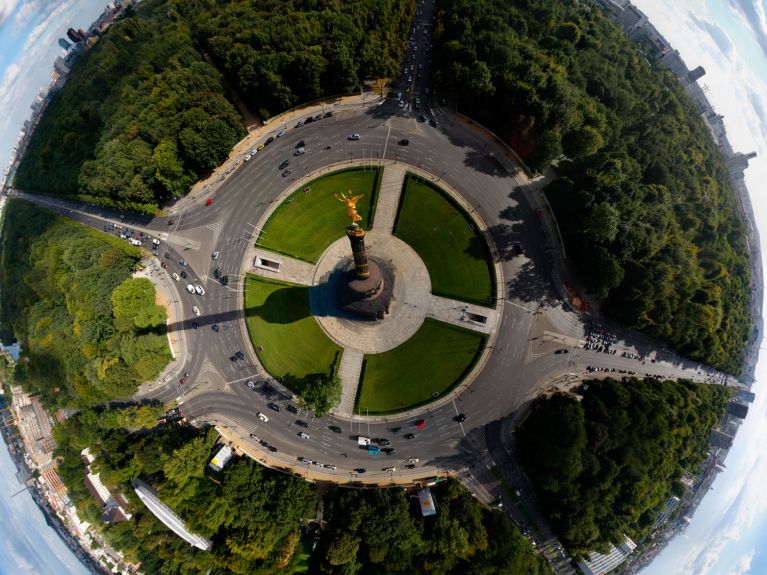
Tourist magnet on the Straße des 17. Juni: the Berlin Flea Market
The Berlin flea market, shortly before the end of the Straße des 17. Juni, on the west side of the Tiergarten, is a tourist attraction. The traditional flea market is affiliated with an artisans market.

Blocked again? The Straße des 17. Juni fan mile
The street’s recent history as an event location begins with the Love Parade techno festival, which once a year, from 1996 to 2006, transformed the street into a party mile. In the meantime, the Straße des 17. Juni is closed for events more than a hundred days of the year. This irritates Berliners, but pleases tourists. The biggest events include the Berlin Marathon, the New Year’s Eve Party at the Brandenburg Gate and, since the 2006 Football World Cup, public viewings for major sporting events. The Straße des 17. Juni then turns into a fan mile or, for short, “the mile”.
